The thing driving the current tabletop revolution is innovation. Talented artists from all over have been combining their art with their love for gaming and producing some truly unique work. One such artist is Doug Hoppes, a North Carolina based artist focusing on the “Impressionist Macabre,” who has made his name with the darkly beautiful Shadowmyths line of card decks. Not only have they been well received for their intended use as storytelling and creativity aids, they’ve also found life as an assist for therapists and teachers trying to connect with patients and students. We had a conversation with Hoppes a little while ago, where we discussed his influences, creative drive, and how the darkness isn’t always meant for be feared.
The Fandomentals: What’s your background in games and RPG’s?
Doug Hoppes: Remember when D&D, Dungeons and Dragons, came out in the late-70’s?
FM: Yeah
DH: Yeah, I was one of those guys.
FM: You’re OG, okay.
DH: No kidding. mid-50’s or so. But no, I played Dungeons and Dragons, I used to play that one, Gamma World, and like the little bitty booklets. I love those games, I played them… Remember the old generation is like, “Oh, Dungeons and Dragons is bad. Oh, kids dragging in these sewer systems.” I went through that whole thing.
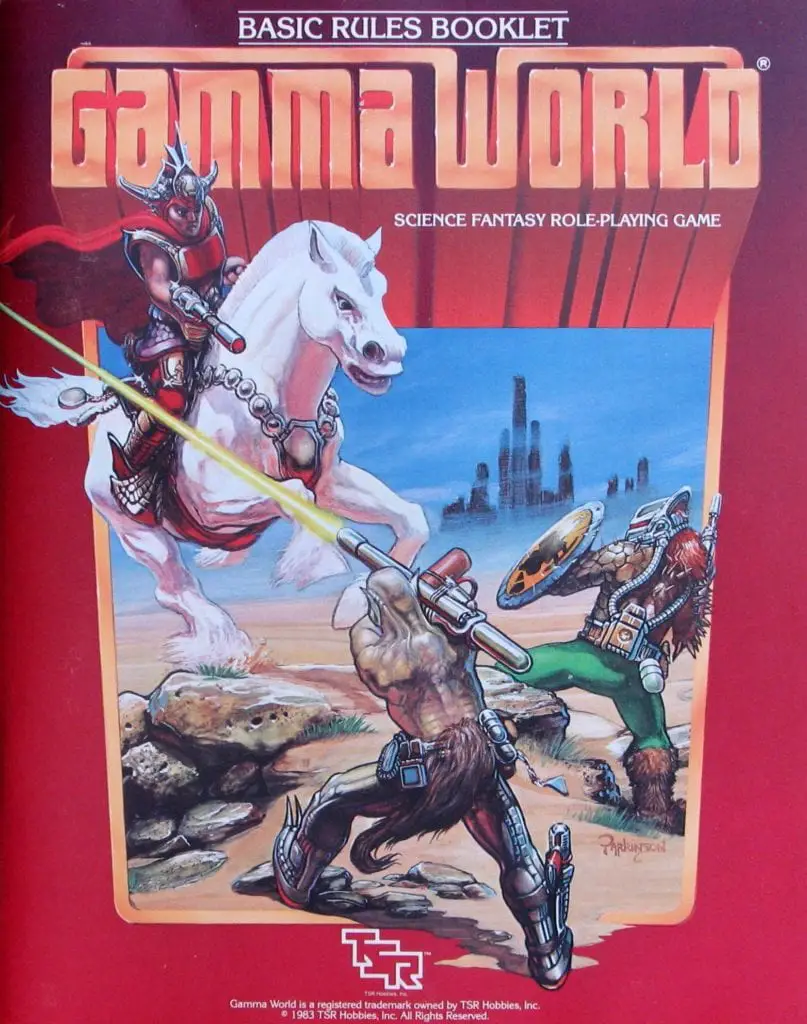
FM: But you were one of those Satanists?
DH: Yes, yeah. I remember my dad saying, he’s like, “Are you on drugs?” “No, no. I’m not on drugs. This is called Dungeons and Dragons.” I know all about fantasy. It was great. So I played D&D since the late-70’s to probably late… probably mid to late-80’s, and then of course life and I was graduating college and stuff like that. But I used to read the Dungeon maps, I would go and read all the manuals. But I love buying the Monster Manuals, Deities & Demigods, we were just buying just to read them.
FM: Oh, yeah.
FM: Because I…even now I got like…the DM’s Guide (EN: Dungeon Master’s Guide) and like I just want to read about the races, that’s all it is. And they’re now making more mythologies, so I love this.
FM: What was the genesis of ShadowMyths?
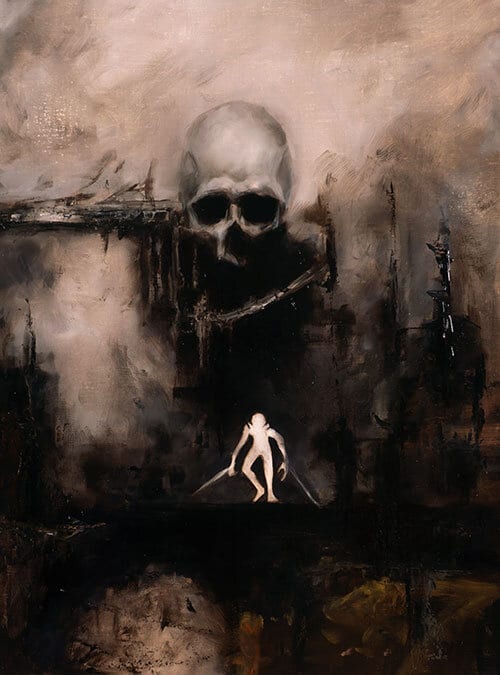
DH: So Shadow Myths’ genesis was what happened was … So I’m a dark fantasy illustrator, I do work for game companies and some book covers and stuff like that. And I want to do my own art book, but I’m also in philosophy so I had my paintings, I did my art book, first philosophy book and I’m like, “Well, this is boring.” And then I was like, “Okay, let me just do an art book.” I’m like, “All right, this is boring. You paint it up and you’re done.”
Then I realized that what happened was if I laid my paintings in a random order it actually told stories. So have you ever looked at a video without sound? You brain starts coming up new ideas about what’s actually happening in the video, right?
FM: Yeah.
DH: Remember story prompts in schools? So the same concept. So what I did was then I realized that … so I was at Gen Con three years ago, at the art show, and a couple of people were like, “Hey, can I use these for campaigns?” I’m like … well, first I did it for writers. They’re like, “Can I use it for campaigns?” I’m like, “That’s a brilliant idea. You can use them for campaigns.” So because almost all your campaigns start with here’s a … let’s go visit the king, let’s wake up or they’re in something, and like you have an infinite world with infinite possibilities and you’re doing all the same things.
So I talked to one person, he’s like, “Well, we’re doing something different. Do have a you’re saving the town from a priest?” “Yeah.” “Well, guess what? So are a lot of campaigns.” So you’re just rewrapping it a little differently. So I realized that, “Okay, if I could tell the same unique stories with my stuff, we can generate unique campaign ideas.” So I started creating the color decks which were the campaign decks.
“This is not a dark deck, this is just somebody just going out for a walk or something like that.”
Then I realized, “Well, since I read the monster manuals, all the advance people read the monster manuals.” And plus it’s all really hard when you’ve got somebody who’s been playing for like 20 years, it was like, okay, you see some sort of like four-legged creature with these long tentacles and they all go, “I leave my armor over here.” You’re like, “Why you do that?” “I don’t know.”
So what I did was I took all my creatures and I put them in the same card form so that people can see creatures without knowing all the stats for them. Because it’s too hard to describe a six-foot tall horned creature and have everybody in the same vision. But if you saw like a wormling which has like skeletal type structure you’re like, “Okay, you know what? I’m going to use bludgeoning weapons for this,” versus … because it maybe something with a skeleton which we know the bludgeoning does much better than [unclear 04:14]
FM: When it comes to you designing these things where do you draw some of your influence from?
DH: I love [Frank] Frazetta’s work. [Zdzisław] Beksiński, I love his paintings. Allen Williams, I love Alenn Williams’ drawings, as a matter of fact I learned my drawing technique from him.
FM: Oh, wow.
DH: So I also really like some of the old, old master painters like old drawers like Albrecht Dürer, Gustave Doré, and Hieronymus Bosch. Hieronymus Bosch is awesome. And the reason why I love Bosch so much is because back then, nobody really thought like that. He thought so far out of the box from everybody else, and he didn’t care, so I’m just kind of like, “This is awesome.”
FM: Is this oil painting?
DH: Yeah, these are oil paintings. And about half through 2/3’s of my paintings are actually done with palette knives and paper towels. It helps me get the movements that I want. So most of my work is characterized by silhouettes, shapes and stuff like that. And I do the movement because … and it works well, and I only go through (courses?) of painting, so it works well with my Shadow Myths system to come up with new ideas. Because if I tell you every … if I do a tight rendering and stuff like that, in a month it’s the same painting but you don’t really … you don’t bring any part of yourself, you say, “That’s a cool images.”
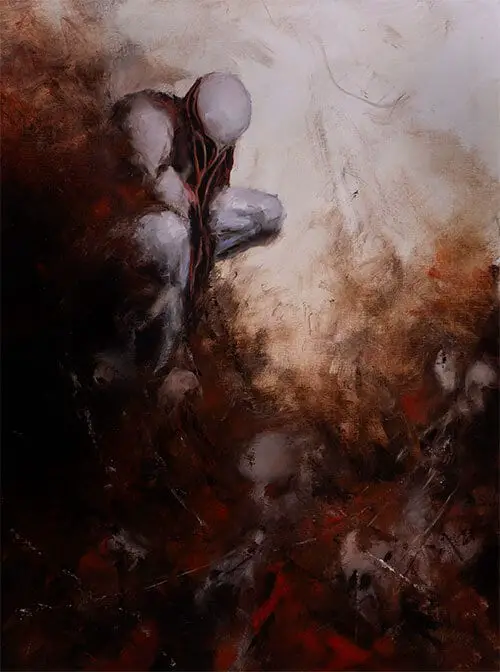
But the way my images are designed out where I only go through (courses away?) you’re bringing yourself to it which means whatever your personal biases, influences or stuff like that, you will see those when you lay the cards around a (mortar?). That’s why it works as campaign ideas, story ideas and all the other stuff, whereas the cards decks are drawings, they’re very exact, so that way there’s no … there’s not much up to the imagination other than what is armor class, hit points are and everything like that.
FM: What are the different decks within the Shadowmyths world?
DH: Okay, there are two drawing decks, Necromar and Malochi. And in my IP world, if you go to shadowmyths.com you can actually click on creatures and you can learn all about the world. I’m starting to put all the creatures in there, the general capabilities.
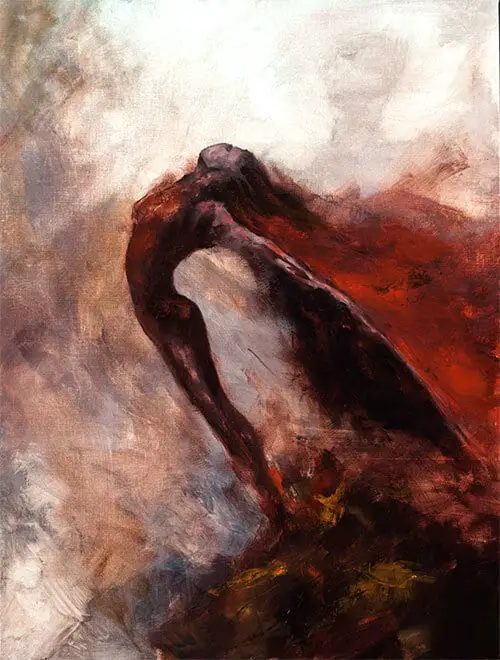
So the Necromar and Malochi decks are the wizards in my world. Malochi was the one who saw the world corruption and everything like that. The Darkness and Turmoil decks, meanwhile, are dealing with real world personal issues.
FM: That’s that philosophy you mentioned.
DH: Yeah. I’m actually working on a deck called the happy deck, but …
FM: That would be a shift, or maybe not?
DH: No, no, it’s actually what it is, is … So, here’s the thing, everybody always said, “Well, all your creatures and everything like that, are dark, scary and stuff like that, and your paintings are scary.” Like, well, I don’t find them that way. And the reason why I don’t find them that way is because if you think about all the creatures and everything like that in my world they got kids, they have jobs, they wake up, they hit the snooze alarm, they want to be on vacation. It’s the same thing.
So if you think in terms of they’re just like everybody else but they just look different. It changes about how … This is not a dark deck, this is just somebody just going out for a walk or something like that.
FM: Can you explain the drawing decks a little more?
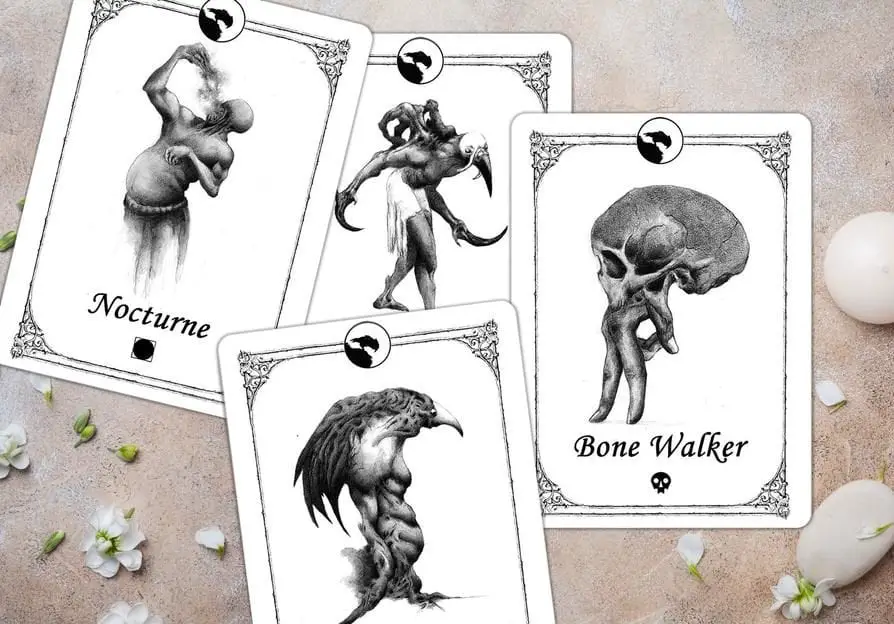
Interviewee: The drawing decks are intended for … they’re called the Shadow Myths creature deck, the creature decks. They’re more intended to replace, to give you … these creatures, you know what their attacks/defenses are, combat and everything like that. But they’re more of a visual aid. You know how people will open up, look at the monster manuals and stuff like that, and they hide all the things that are shown in the picture? It’s exactly the same concept.
The drawing decks are used by more of the gamers and people who want to use them in their games, but it’s also used by people doing oracles, which means the oracle books have all the meanings of all the paintings. So I wrote four oracle books, one for each one and the cards of the oracle. They’re very popular.
FM: So the whole like sort of third use with this is very, very cool.
DH: Yes. So the color decks are the storytelling, so the writers use for storytelling, gamers use this as campaign ideas, prompts and [unclear/talk too fast 08:56] things and stuff like that. Therapists are using them more to talk with their patients because a lot of the patients are young, so it gives them, “Hey, let’s take five cards. Tell me what you’re thinking and a bunch of other stuff.” So therapists are using that.
Teachers are using them in their creative writing classes, they’re also using it with inner city kids to like … some of the teachers I know are using them in their … they’ve got lesson plans in dealing with inner city kids because they have issues. So it’s kind of a way of using that in something … They like Grand Theft Auto and like Dark Souls games and so like it’s like using this to help them come up with and tell their stories.
FM: Is there anything else you’re working on?
DH: Yeah. So I’m working on the happy deck, I’m working on a monster manual that would contain all of the descriptions up my website but in a book form. I’m thinking … I’m trying to figure out what I’d like to do is do miniatures of them so that you can use the cards and the creatures and it works all in your games too. So those are the things in there.
And then like I said, and then for the other things, I’m working with some teachers on course curriculum and potential … and then I’m … I have a couple of therapists who are already calling me, not for my own personal thing, but they’re actually calling me to help them figure out how we can get this more into people who are dealing with addictions, PTSD and stuff like that.
You can learn more about the world of Shadowmyths at shadowmyths.com, and pick up a deck of your own on Doug’s Etsy shop. You can also keep up with him on his Twitter.

